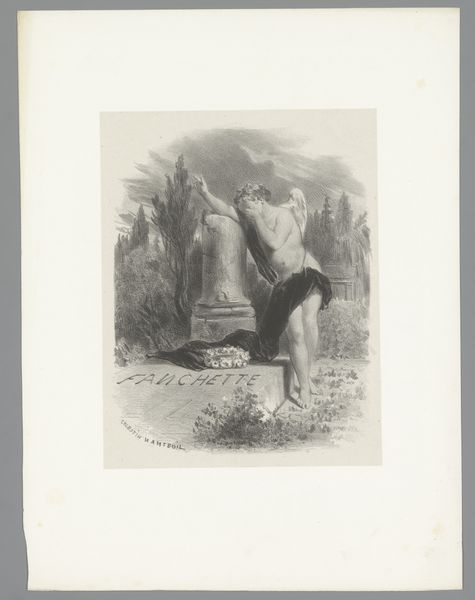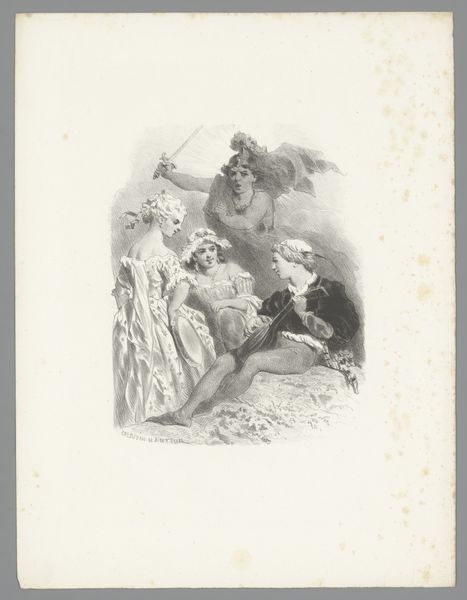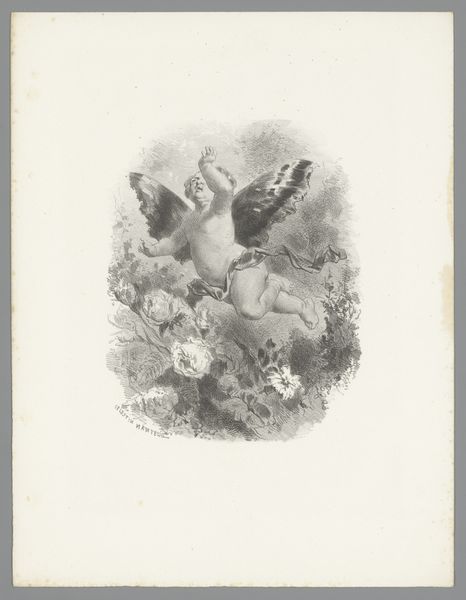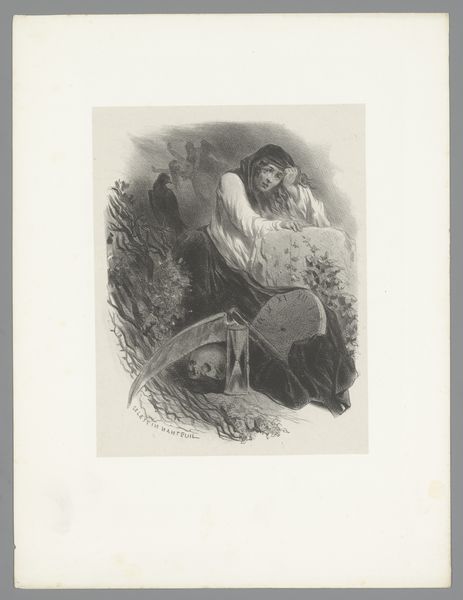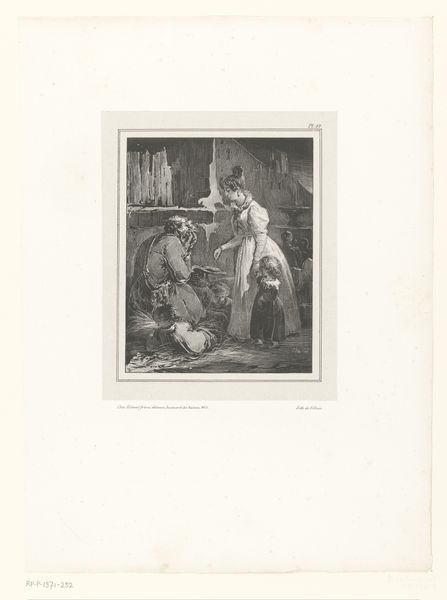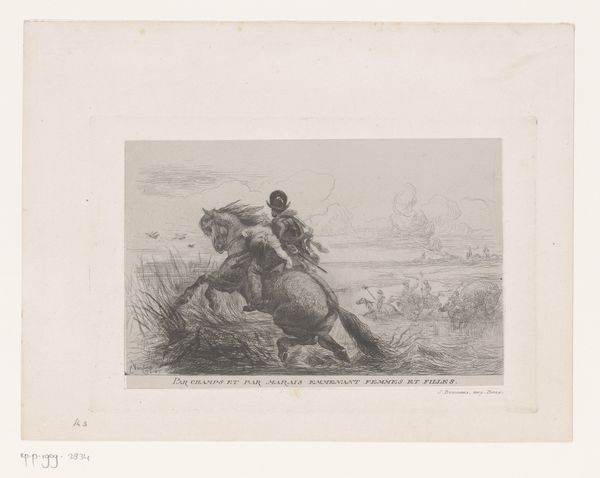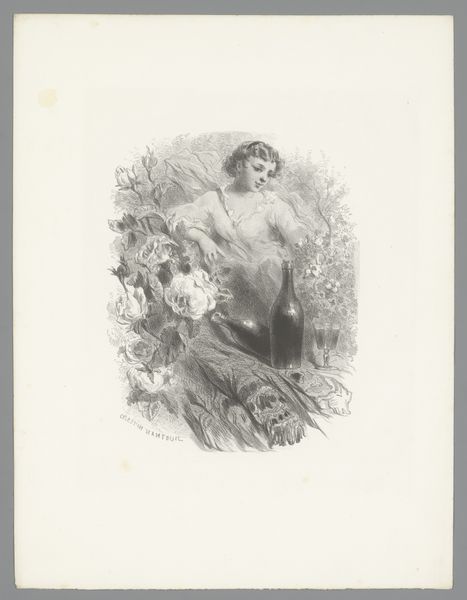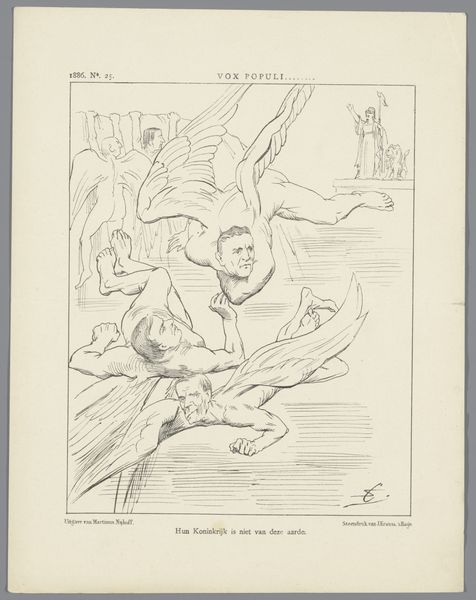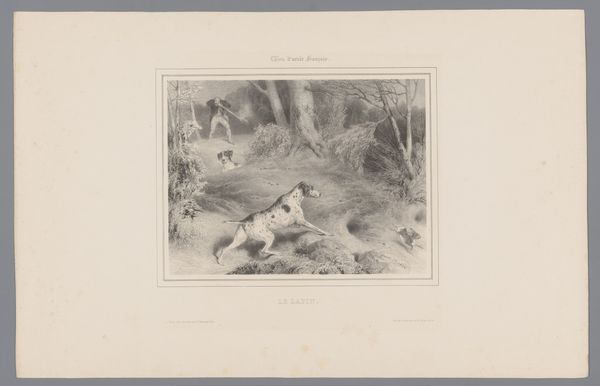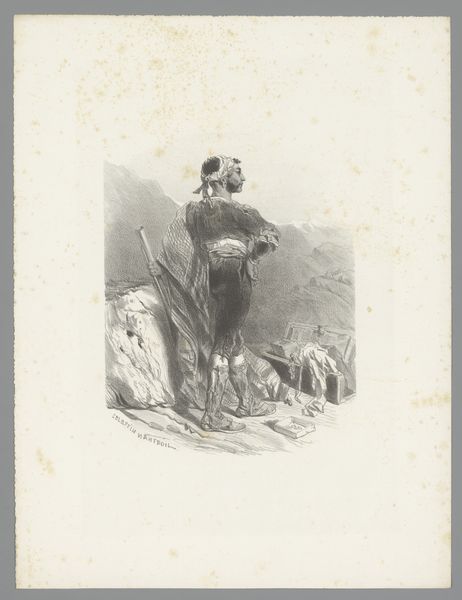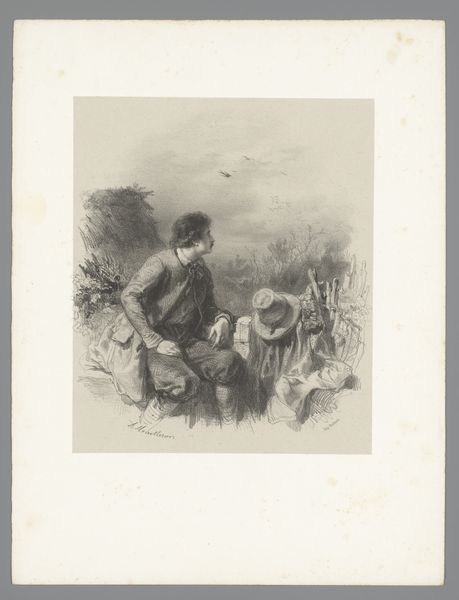
drawing, pencil
#
pencil drawn
#
drawing
#
pencil sketch
#
light coloured
#
figuration
#
romanticism
#
pencil
#
watercolour illustration
#
genre-painting
#
watercolor
Dimensions: height 360 mm, width 275 mm
Copyright: Rijks Museum: Open Domain
Célestin Nanteuil created this lithograph, featuring two dancing women and a musician, during the 19th century. The lithographic process involves drawing with a greasy crayon on a flat stone, treating it with chemicals, and then printing the image. The final print gains its effect from the contrast between the drawn lines and the blank paper. Nanteuil expertly exploits the starkness, allowing light and shadow to define the figures and their movements. The lithograph captures a sense of spontaneity. The technique allowed for relatively quick reproduction, making art more accessible to a wider audience during that time. This reproductive capability links the artwork to the rise of mass media and visual culture. While seemingly a scene of leisure, the print’s existence and distribution reflect the burgeoning industrial processes of the era, blurring lines between artistic creation, commerce, and social representation. It challenges traditional notions of art by existing as both a unique work and a replicable commodity.
Comments
No comments
Be the first to comment and join the conversation on the ultimate creative platform.
